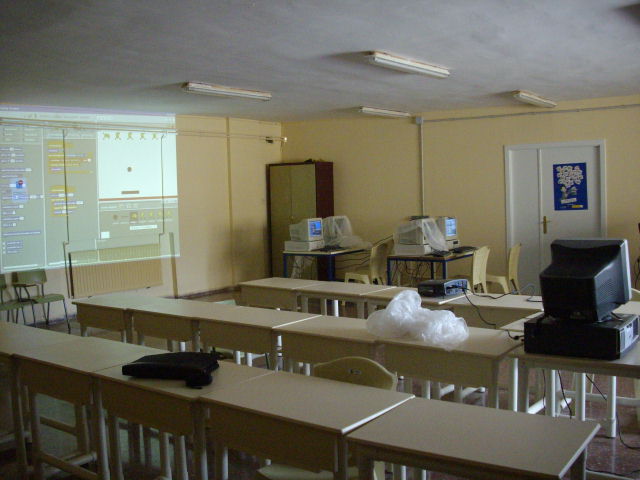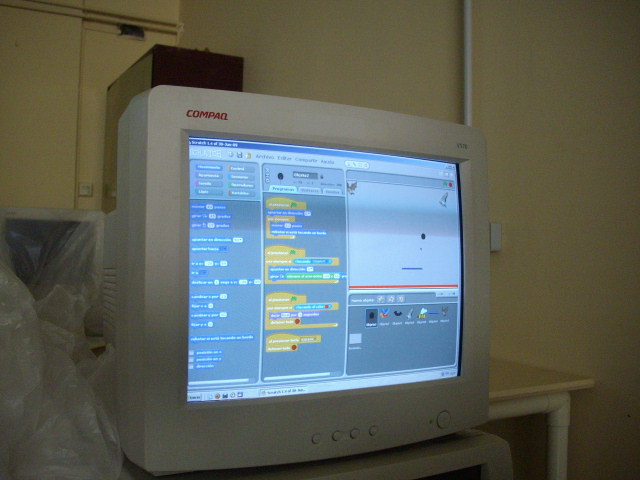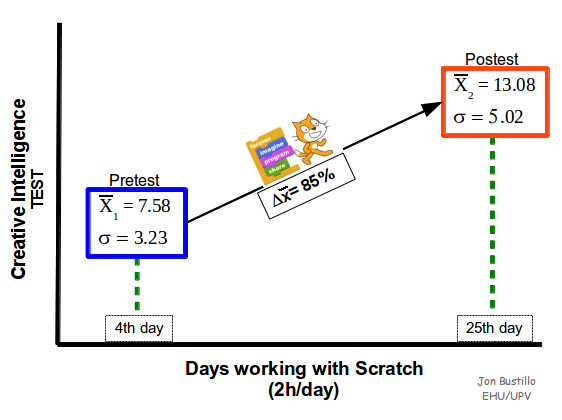Using Scratch in Prisons: An Interview with Jon Bustillo from Basque Country University
Jon Bustillo is a Ph.D. student in the Basque Country in Northern Spain. His dissertation work centers on his experiences helping prison inmates learn Scratch and develop their creativity. In this Q&A interview, he describes his research and shares some of the initial findings.
How did you find out about Scratch?
In the beginning of 2009, I was looking for articles about creativity and learning at school and in the text of one it mentioned a software called “Scratch,” which helped children program using blocks. In September 2009, a friend and teacher, Pablo Garaizar, of the University of Deusto, offered an open workshop that showed how to work with Scratch. That was my starting point. From there I've been including Scratch in the subject I teach at the University College. Moreover, I've held workshops with young people (ages 6-12) and with teachers of primary, secondary and university level.
Tell us about your work in the prisons.
I'm currently finishing my Ph.D. and my dissertation work is about how to increase the creativity of a group of prisoners through working with Scratch. I think that if you offer a way and a tool to be creative it's possible to help people think in a different way. For this investigation, I've been working with two different groups. The first group includes 14 men from 26 to 65 years of age. Only one had finished high school. Most of them said that they didn´t have any experience using computers. The second group includes 11 men and 1 woman, aged 28 to 50, from four different countries. In this group, they had more experience using computers, but only two had finished high school studies. (Note: The results described in this post are only from the first group. The data of the second group is similar, but not definitive at this time.)
What kind of Scratch projects are they creating?
I am studying if there is a relationship between working with Scratch and improving the creativity of the participants. I offered a variety of projects to show them how to use Scratch. With each group, we begin by drawing on the blackboard the basic schema of a game, and then the prisoners shared new ideas or situations towards continuing and completing the game. Then we defined the steps to program and develop the game. You can find their projects here: http://scratch.mit.edu/users/respetoscratch.

How has the process been like for you as an educator?
In this new teaching situation I wasn't a teacher. I was more of a coach or collaborator who helped them to find solutions rather than someone to give a solution. We first imagined/defined in our mind how the game could be, then we defined the steps, we tried to program it, we played the project, we debugged it, and we reflected on how the game works...and then imagined again a new version, like the creative spiral. At the end of the course, each prisoner selected and developed his/her own project. When the programs were finished, we showed them to other prisoners and professionals from the prison. It was a very special moment for the participants when they received reactions from different players.

What has your data found about how Scratch might affect the prisoners' creativity?
We focused on changes in the creativity of the prisoner participants from the Scratch experience. To do this, we measured at the beginning (pretest) the creative intelligence using a CREA test. After 25 days and more than 50 hours of working with Scratch, we again measured the creative intelligence (posttest). The increase was a noticeable 85%.

The graph above shows how the average of the postest increased from X1= 7.58 in the prestest (taken on the 4th course day) to X2 = 13.08 in the posttest (taken on the last and 25th course day). We found that the difference between pretest and posttest (t= 5,18 ; p<1%) is statistically significant, so we think that working with Scratch can encourage the development of creativity.
Were there any other effects observed in the participants?
We found that the influence of working with Scratch goes beyond motivation and learning how to program. Some professionals of the prison reported changes in the behavior of the prisoners who took part in the experiment. They said that they observed a change in how prisoners organized their thinking (more logical) and their communication skills. I know I do not have enough data to demonstrate changes in the behavior and thinking process, but I feel that Scratch had a direct influence and I hope to continue investigating this type of impact with Scratch.

